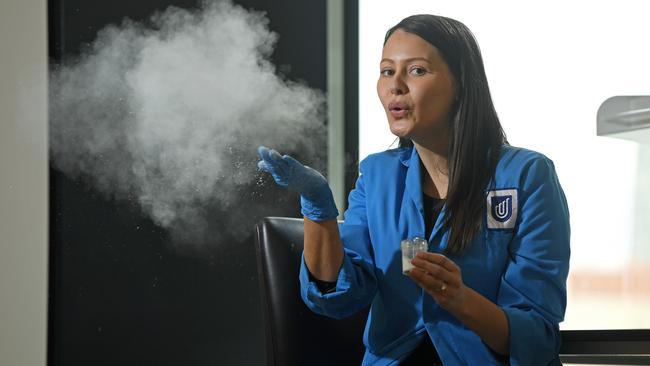Adelaide researchers proud to see nanotech drug delivery method reach clinical trial
Adelaide scientists have devised a new method of drug delivery that means more medicine enters the bloodstream, by using nanotechnology with treatments previously left in the too hard basket.

SA News
Don't miss out on the headlines from SA News. Followed categories will be added to My News.
Using the magic of nanotechnology, Adelaide scientists have devised a new method of drug delivery that means more medicine enters the bloodstream.
A clinical trial using one of the world’s most commonly prescribed drugs, statins for lowering cholesterol, has demonstrated the potential of the patented technology.
UniSA Professor Clive Prestidge from the ARC Centre of Excellence in Convergent Bio-Nano Science and Technology is proud to have taken the technology from proof of concept through to clinical trial.
“It’s shown excellent performance. It’s literally three times better in some ways than the currently available formulation on the shelf,” he said.
“Statins are still a hot property, heart attacks and cardiovascular disease are not going away … and this is something that could be really commercially relevant.”
As lead author and UniSA PhD candidate Tahlia Meola explains, many drug candidates fall into the “too hard basket and are disregarded”, simply because they don’t dissolve in water.
These fat-soluble “lipids” are not readily absorbed by the body and if swallowed, they usually have to be taken with fatty food.
Even then, only a very small proportion of the active ingredient reaches the blood stream. But the clinical trial of nanoparticle-encased simvastatin increased absorption of the drug by 160 per cent, while absorption of the medicinal metabolite simvastatin acid rose by 350 per cent.
“The technology allows the lipid droplets to be confined within this solid powder, which we can then administer as a capsule or a tablet,” Ms Meola said.
“This can improve the absorption of many poorly water soluble drugs, such as anti-cancer or antipsychotic drugs.”
It’s a hi-tech solution that looks deceptively simple, Ms Meola says.
“It just looks like an average powder, you wouldn’t know the difference, but it actually contains many little lipid droplets, which have been solidified, within a solid powder,” she said.
“So it‘s liquid lipid, within a solid powder.”
The research is published in the journal Drug Delivery and Translational Research.

